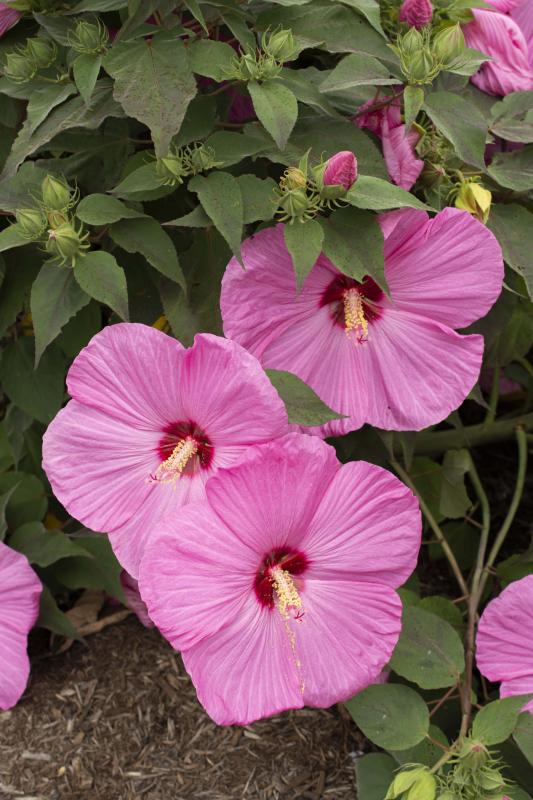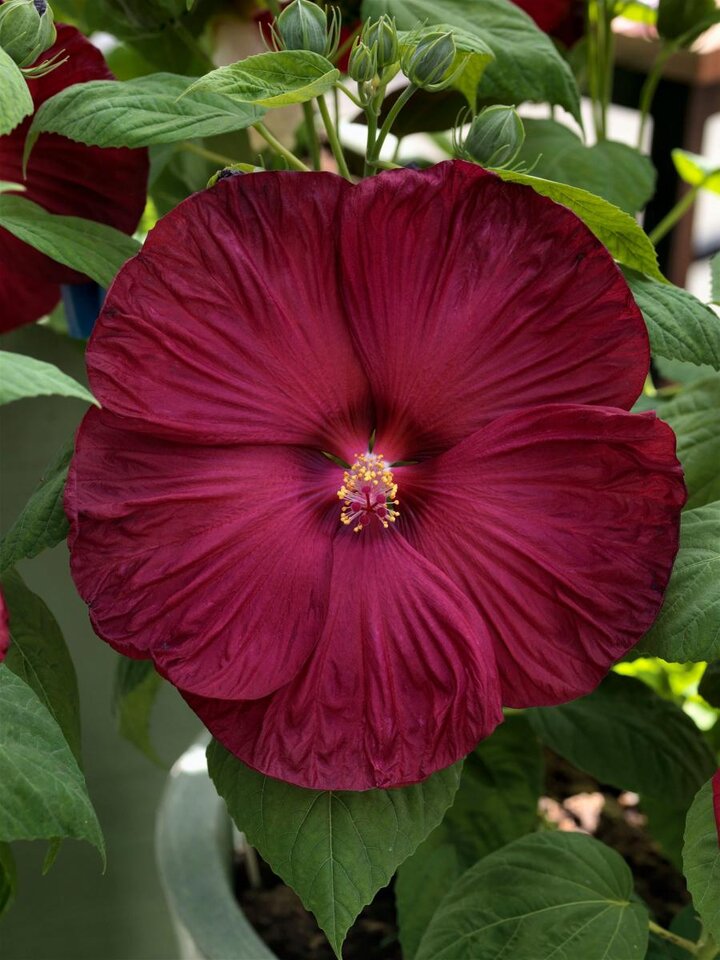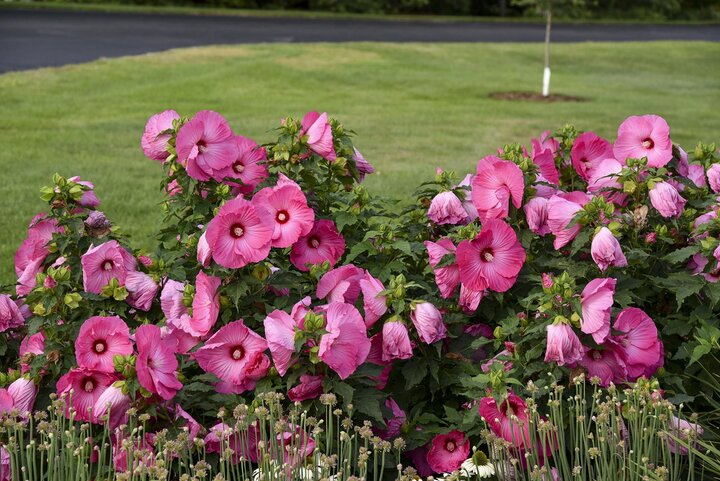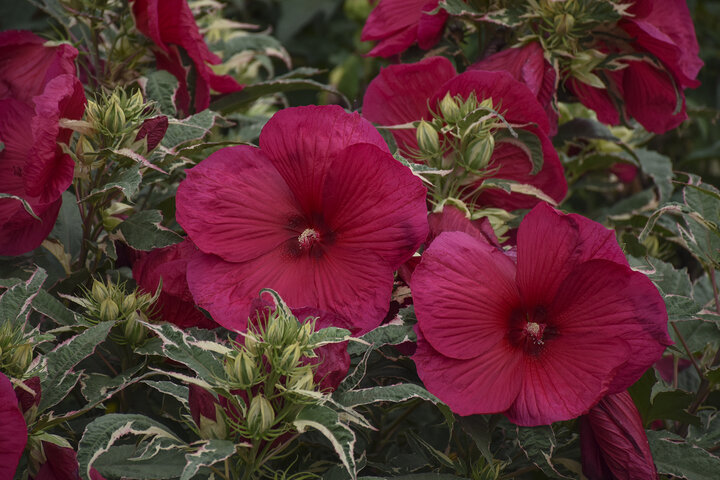
'Head Over Heels Adore' from Star Roses and Plants. Image from the National Bureau
So far this spring we’ve looked at the National Garden Bureau Plant of the Year categories for annual (sunflowers), perennial (monarda) and vegetable (garden beans). The last one we’ll discuss is the “shrub” of the year, which really isn’t a shrub – at least not in Nebraska. It does have woody stems, but they die down to the ground each year. It’s perennial hibiscus, Hibiscus moscheutos H. laevis.
Don’t confuse perennial hibiscus with either tropical hibiscus, H. rosa-sinensis, or Rose of Sharon, H. syriacus. Tropical hibiscus in a woody shrub from southeast Asia, but is not winter hardy in Nebraska. However, it can be grown as a houseplant or used as a colorful accent in the summer garden. Rose of Sharon, which - confusingly enough - is also known as shrub hibiscus, is a small tree typically reaching about 15 feet in height and is winter hardy to Zone 5

The most amazing thing about perennial hibiscus are the huge dinner plate-sized flowers produced from mid-summer through frost. Flowers range in color from deep red to bright pink, white or yellow, with different eye patterns and streaking through the petals.
Most hardy hibiscus plants available are hybrids, which can primarily be traced back to the species Hibiscus moscheutos. This native species can be found growing naturally in wetlands and along riverbanks throughout the Midwest and East Coast, extending down even into Texas and Florida.
Perennial hibiscus is very winter hardy, capable of surviving temps as low as -30° F.
Renowed perennial hibiscus breeders - Jim, Bob and Dave Fleming - did much of their work here in Lincoln, NE. They focused on creating plants capable of surviving Nebraska’s cold climate. They also developed hybrids with unique maple-shaped leaves, purple or maroon leaf coloration and many new bicolor or streaked flower colors. Their first patented plant is still available in the garden industry today. ‘Kopper King’ perennial hibiscus has a compact 4’ height, coppery-red foliage, and huge white flowers streaked with red. Although the Fleming brothers are gone now, their work lives on in Fleming’s Flower Fields

Hardy hibiscus have a history of growing in wet areas such as along riverbanks and around inland lakes. They perform best with consistent watering, particularly if they have been recently transplanted. If your hibiscus is losing its lowest leaves or aborting buds, you may need to up the water! But well-established plants can be surprising drought resistant, too.

Another characteristic of the genus is they are late to break dormancy in spring. They’re not dead! When they do awaken they’re off to the races growing more than an inch a day. Depending on the year, hibiscus may stay dormant through the end of May.
Instead of tearing your hibiscus out and starting over, try planting them with tulips, daffodils, or other spring-blooming bulbs, which will be out of bloom when hibiscus are ready to emerge. As an added bonus, the tired foliage of these spring-blooming bulbs is quickly covered by the bushy hibiscus plants.
Once your hibiscus gets going, be sure to give them plenty of space to grow. Mature hibiscus can get 5-6′ wide and grow quickly during the year. If you take a week’s vacation in June, you’re likely to come back to a plant twice the size you left it.

For more information on this year's featured plants, including great perennial hibiscus hybrids to consider, visit the National Garden Bureau. The National Garden Bureau recognizes and thanks Walters Garden, an NGB member, as author and contributor to this fact sheet.
Images from the National Garden Bureau
- 'Head Over Heels Adore' from Star Roses and Plants
- 'Disco Belle Rosy Red' from Sakata
- 'Airbrush Effect' from Walters Garden
- 'Purple Pillar Color Choice' from Spring Meadow
- 'Summer Carnival' from Walters Garden
Search Our Archive
Associated Video
Perennial Divisions
Nebraska Extension Landscape Horticulture Specialist Kim Todd and UNL Assistant Director for Landscape Services Jeff Culbertson demonstrate dividing perennials